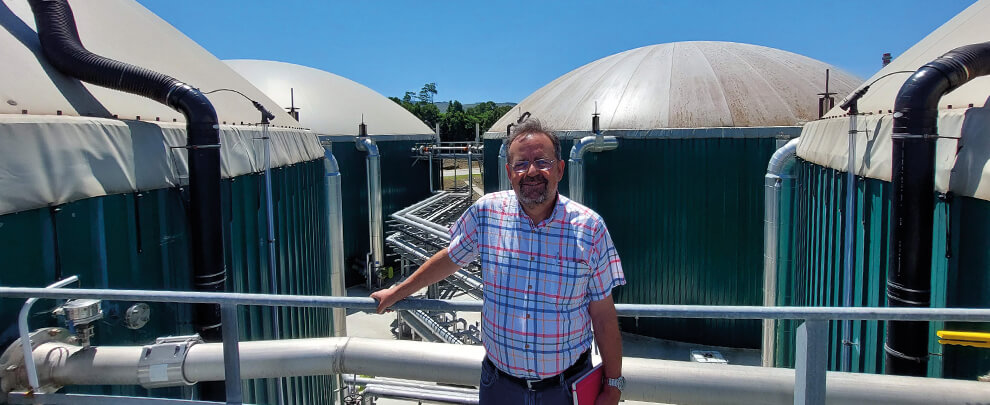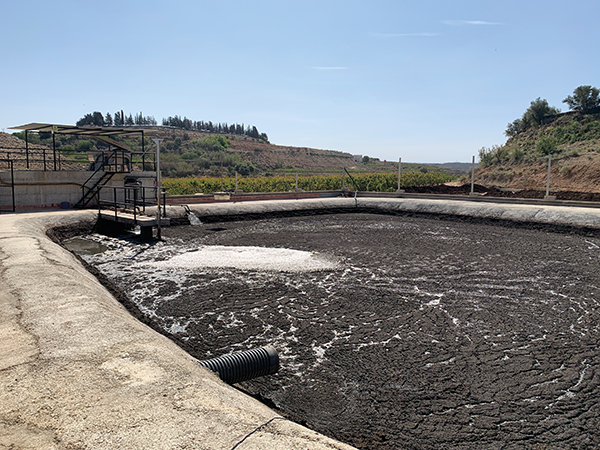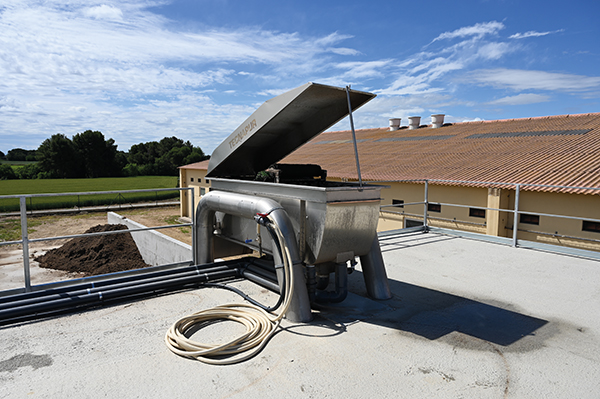Blog
Blog

Challenges and opportunities of biogas production
10th October 2023 - News
More and more farmers are betting on valuing and obtaining revenue from their slurry. One of the options to benefit from this livestock waste is the production of biogas, a process that, in addition to offering an economic yield, has other benefits, such as reducing emissions into the atmosphere. We spoke with Xavier Flotats, professor emeritus at the Polytechnic University of Catalonia (UPC) and expert in biogas, who explains the anaerobic digestion process to obtain biogas, its advantages and its degree of implementation at a national level, among other issues.
Can you explain briefly what anaerobic digestion is?
Biogas is produced naturally in the slurry pools themselves. It is a biological process in which anaerobic bacteria decompose organic matter in the absence of oxygen, and biogas is released as a result. This natural process can be controlled with anaerobic digesters, which keep the slurry inside for a period of about 20-30 days at a constant temperature of 35-37 ºC, with a degree of agitation and homogenisation so that the sedimentation of the particles does not create a mechanical problem. The biogas is obtained during its passage through the digesters.
What technologies currently exist to process the anaerobic digestion of pig slurry?
If we only refer to slurry, the most appropriate technology is the full mixture digesters, which I explained above. From here on, there are variants. On the one hand, there are rural digesters, which are based on taking advantage of a pond where we already have an agitation system and covering it hermetically with a waterproof material so that the gas that occurs naturally does not escape into the atmosphere. In this case, we cannot control the process because the temperature needed by the bacteria may be in summer but not during winter. On the other hand, there is another more sophisticated technology, the industrial digester. It is a cylinder with a rubber cover where the produced gas will accumulate. Its size and sophistication can vary depending on whether it is only for a farm or if it is collective.
Which type is better regarding economic viability and environmental sustainability: large centralised plants where the waste of non-agricultural origin is also processed or small plants at the farm level where only slurry and agricultural products are processed?
In an area with a surplus of nutrients, for example, the Segrià region (Lleida), it is best for groups of farmers to promote a collective plant that can generate income with the biogas it produces and thus be able to invest in digestate treatment technology to create products that are exportable outside the area of application of the management plan. Conversely, transporting the slurry to a collective plant on an isolated farm can cost significantly. So, if there is no problem with surplus nutrients, a biogas plant can be made on the farm, where other clean (uncontaminated) agricultural by-products can also be treated. If there is a problem with surpluses at the individual level, the most practical thing is to put a solid-liquid separator and separate the slurry as soon as possible. Subsequently, the solid portion can be transported to a collective plant, but for this to be of interest, there must be much organic matter in that solid portion. In any case, the economic viability will depend on the size of the plant and the specific gas production since the larger the installation, the lower the unit cost and the more favourable its economic return.

The future involves a change in the management of slurry. Photo. Rotecna.
What are the main advantages of biogas production for farmers and the environment?
On the one hand, biogas can cover part of a farm's demand for diesel or electricity and even generate income if the biogas produced is sold to third parties. That is, it can mean an economic return at the farm level, although in many cases, the benefit is not to sell that biogas but to cover one's demand for electricity. The return on investment of the plant is estimated to be about seven years, although, with the recent rise in prices, this return in some cases has been reduced to four years. However, the most crucial advantage is the reduction of emissions, greenhouse gases and ammonia. The methane emitted in a slurry pond has a greenhouse effect 25 times higher than CO2. Ammonia does not have a direct greenhouse effect but produces acid rain. When a fraction of this ammonia enters the atmosphere, it oxidises and becomes nitrous oxide, which does have a greenhouse effect. By covering the ponds and producing biogas, we reduce these emissions.
What is the degree of national development in terms of biogas production?
Our degree of implementation is meagre. At the level of the European Union, biogas production per capita puts us third by the tail, only ahead of Romania and Malta. Currently, in Spain, there are about 240 biogas plants, while throughout Europe, there are about 20,000. Eurostat data for 2021 shows that our biogas production averages 80 kWh per inhabitant annually. The figure is far from that of countries such as Denmark, where in 2021, 1,246 kWh/inhabitant/year were produced, or Germany, with 1,069. Then there is the case of France, which is one of the countries that, in recent years, has been showing more growth. Currently, its biogas production stands at 241 kWh/inhabitant/year, although its growth potential is enormous since the French government is developing policies that promote biogas production. The reasons why the degree of implementation is still low at the national level may be the lack of incentives and awareness of the potential of this technology and its benefits, in addition to the lack of integrated and coordinated policies in areas such as the fight against climate change, energy self-sufficiency, waste management and rural development.
What role does biogas play in the handling of livestock manure?
Anaerobic digestion is the key technology of any sustainable droppings treatment strategy. Until we started talking about the effects of greenhouse gases, what affected our decisions the most was nitrate regulation. Now that we have a much more global vision, and that in addition to controlling nitrates in water, we also pay attention to the emissions of ammonia and methane into the atmosphere, anaerobic digestion has an extraordinary role since it converts readily biodegradable organic matter into a fuel gas that can be used energetically, which means the replacement of fossil fuel and a saving of money. In addition, it prevents air pollution caused by slurry.
How does the anaerobic digestion process affect the fertiliser value of digested slurry?
What anaerobic digestion does is mineralise slurry. This mineralisation allows combined processes to work better. For example, suppose we want to recover ammonia in ammonium sulfate or ammonium nitrate to replace a mineral fertiliser, and the slurry has much organic matter. In that case, it escapes with ammonia, contaminating the product obtained. On the other hand, if we apply anaerobic digestion, having mineralised organic matter, we can get ammoniacal salt crystals practically clean of organic matter and without odours. Then, we can say that, after anaerobic digestion, we obtain a cleaner, more innocuous, more mineralised fertiliser with a higher degree of assimilation.
What other slurry valorisation treatments could be complemented with anaerobic digestion?
Apart from stripping and absorption to obtain ammonia salts, we have the precipitation of struvite, a phosphorus and ammonium salt. Filter and reverse osmosis systems also allow to get concentrated and clean water. On the other hand, there are the thermal processes of concentration by vacuum evaporation, which would enable us to recover the evaporated water and obtain a concentrated product, which we can dry and finally convert into pellets. These processes work much better and give better results if combined with anaerobic digestion.

Separation should be done as soon as possible to maintain the greatest possible amount of nutrients in the solid fraction. Photo: Rotecna.
What role do solid-liquid slurry separators play in this process?
Before biogas production, mechanical separators played a critical role since they had to make the separation as soon as possible to keep as many nutrients and organic matter as possible from the slurry in the solid fraction to be transported to a centralised plant. Then, after the production of the biogas, if you wanted to apply another process to obtain a by-product, such as, for example, ammonia salts, or perform reverse osmosis, the use of a physicochemical system can also be beneficial and exciting, especially in collective plants.
What challenges are there in terms of biogas production?
Farmers must believe in it, knowing they can produce and use energy for their benefit. However, there is a second, even more critical factor relating to the emission of greenhouse gases. Ammonia and methane are emitted into the atmosphere in the slurry pond. If we do the anaerobic digestion as soon as possible, we do not let the slurry decompose in the pool. This way, we avoid ammonia and methane emissions into the atmosphere, which we can use as energy in our favour. But if slurry is not valued as a resource, and there is no awareness of the importance of quickly covering the pools, we may have a barrier. On the other hand, it is essential that the slurry is removed from the bottom of the warehouse as soon as possible, and this should be done every day. In this way, in addition to obtaining many health benefits for the animals, we do not lose the potential biogas has. Building a biogas plant without modifying slurry management can be very inefficient. In short, the challenges are to believe it, to want to reduce emissions and to remove slurry from warehouses as soon as possible. I think that when environmental meat labelling is a reality, which it will be, whoever has not solved these environmental challenges will disappear from the market.
What will the future of slurry treatment and management look like?
I believe that the future must go through a change in slurry management on farms. For example, if the slurry is stored under the slat during fattening, there is no future. Without going any further, a separator that treats a fresh slurry will work much better than one that has been longer in the warehouse or the pool. Therefore, the first and most crucial step is to remove the slurry immediately, at most within 24 hours. Then, whether we have larger or smaller facilities, we must have a covered pond or a digester -- a system that prevents gases from going into the atmosphere and ammonia from escaping, to have a product with a higher fertiliser value for agricultural use.






